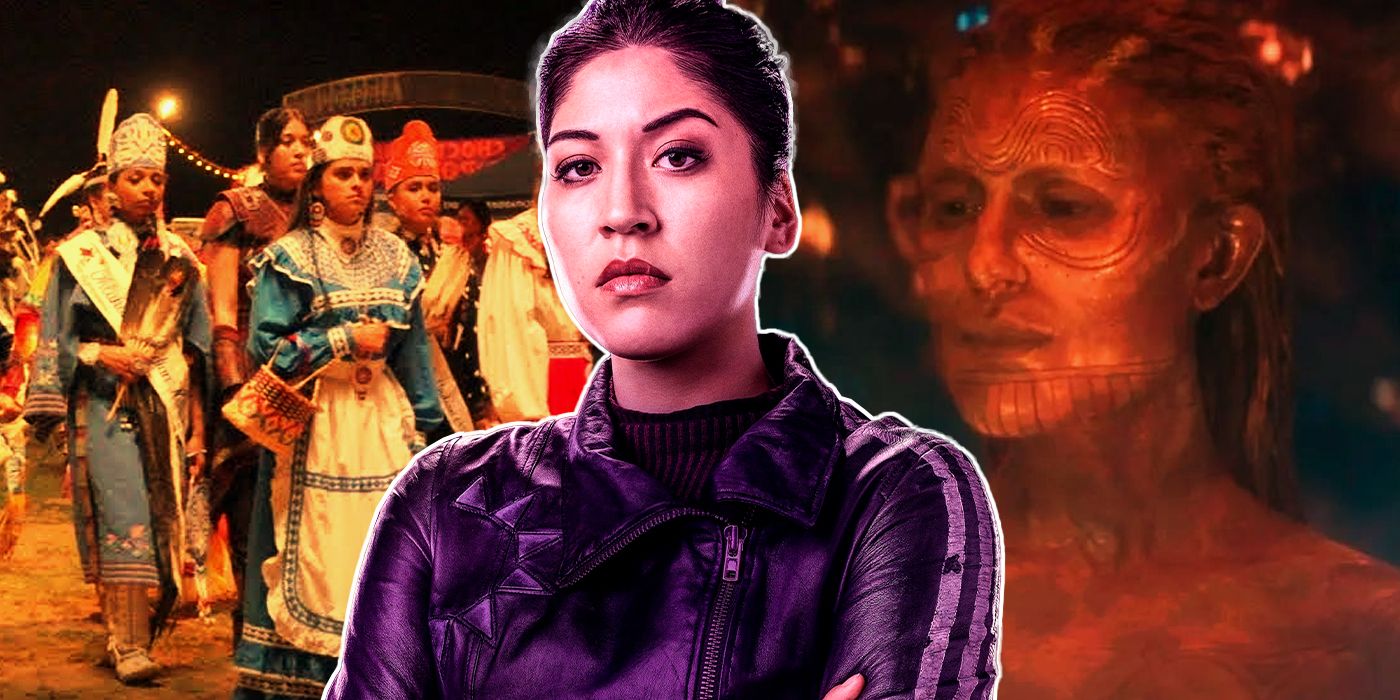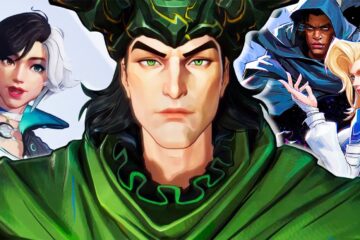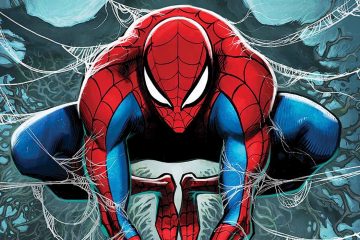Indigenous representation has always been a particularly rocky and troubled path for comics to walk over the decades. While indigenous culture has long been included in comics, much of what was depicted in the past was horribly stereotypical or outright antagonistic. Throughout the ’50s and ’60 when Western comics were in vogue, indigenous peoples were portrayed as the “savage reds,” a feral and uncivilized people who existed only to attack and addle the heroic cowboys of the Wild West. When indigenous peoples were finally given their own superheroes, those characters – despite having good intentions – were still large steps backward in how indigenous culture was to be depicted. Characters such as Marvel’s Red Wolf and DC’s Apache Chief were rife with stereotypes and were generally written as one-note cultural oddities, far less engaging or deep than their other superhero contemporaries.Over the years, however, strides have been taken to rectify the problems of yesteryear. Danielle Moonstar of the New Mutants, Forge of the X-Men, and Snowbird of Alpha Flight are all indigenous characters that were given much more depth and respect in their characterizations. Most recently, Marvel’s Echo has received fantastic treatment in her very own show on Disney+ that not only succeeds in presenting positive indigenous culture but authentic Choctaw culture, as well. Having debuted on January 9th on the Disney+ streaming service, Echo is a five-episode series that stars the titular Choctaw superhero. Continuing narrative threads first introduced in 2021’s Hawkeye, and even tying into content from 2015’s Daredevil on Netflix, Echo acts as both a successor to those shows while establishing its own characters and mythos.Echo’s origins in the MCU are similar, but different in many ways. Having debuted onscreen in Hawkeye, Echo was established to be a woman driven by vengeance. When Ronin killed her father in his quest to discover the truth behind his family’s disappearance during the events of Avengers: Endgame, Echo swore to kill Ronin in return. When she confronts Clint after having regained both his family and Hawkeye persona, Echo learns the truth behind her father’s death: Kingpin had him killed and had lied to Echo about it, instead directing her to eliminate his enemies. Echo pulls a gun on Kingpin and shoots him in the face, she and the audience both believe the crime lord has finally met his demise. Echo continues Maya’s story and dives into her motivations, history, and, most importantly, what the future will have in store for her.
Indigenous representation has always been a particularly rocky and troubled path for comics to walk over the decades. While indigenous culture has long been included in comics, much of what was depicted in the past was horribly stereotypical or outright antagonistic. Throughout the ’50s and ’60 when Western comics were in vogue, indigenous peoples were portrayed as the “savage reds,” a feral and uncivilized people who existed only to attack and addle the heroic cowboys of the Wild West. When indigenous peoples were finally given their own superheroes, those characters – despite having good intentions – were still large steps backward in how indigenous culture was to be depicted. Characters such as Marvel’s Red Wolf and DC’s Apache Chief were rife with stereotypes and were generally written as one-note cultural oddities, far less engaging or deep than their other superhero contemporaries.
Over the years, however, strides have been taken to rectify the problems of yesteryear. Danielle Moonstar of the New Mutants, Forge of the X-Men, and Snowbird of Alpha Flight are all indigenous characters that were given much more depth and respect in their characterizations. Most recently, Marvel’s Echo has received fantastic treatment in her very own show on Disney+ that not only succeeds in presenting positive indigenous culture but authentic Choctaw culture, as well. Having debuted on January 9th on the Disney+ streaming service, Echo is a five-episode series that stars the titular Choctaw superhero. Continuing narrative threads first introduced in 2021’s Hawkeye, and even tying into content from 2015’s Daredevil on Netflix, Echo acts as both a successor to those shows while establishing its own characters and mythos.
Echo’s origins in the MCU are similar, but different in many ways. Having debuted onscreen in Hawkeye, Echo was established to be a woman driven by vengeance. When Ronin killed her father in his quest to discover the truth behind his family’s disappearance during the events of Avengers: Endgame, Echo swore to kill Ronin in return. When she confronts Clint after having regained both his family and Hawkeye persona, Echo learns the truth behind her father’s death: Kingpin had him killed and had lied to Echo about it, instead directing her to eliminate his enemies. Echo pulls a gun on Kingpin and shoots him in the face, she and the audience both believe the crime lord has finally met his demise. Echo continues Maya’s story and dives into her motivations, history, and, most importantly, what the future will have in store for her.
#Marvels #Echo #Wonderful #Representation #Choctaw #Culture
Note:- (Not all news on the site expresses the point of view of the site, but we transmit this news automatically and translate it through programmatic technology on the site and not from a human editor. The content is auto-generated from a syndicated feed.))



